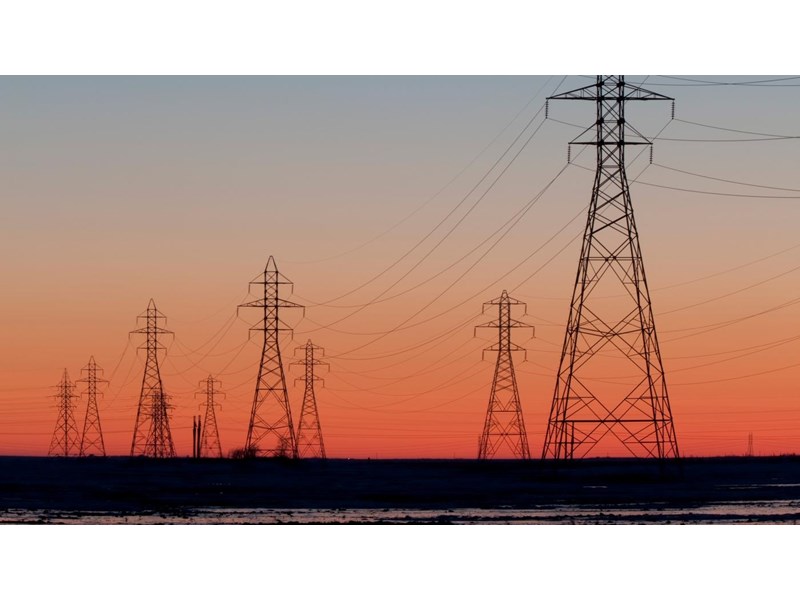How to address congestion risk in US power markets
Understanding the implications of congestion is crucial for participants in the dynamic energy market
3 minute read
Brian McIntosh
Vice President, Americas Power and Renewables Research

Brian McIntosh
Vice President, Americas Power and Renewables Research
Brian brings more than fifteen years of power industry experience to his role.
Latest articles by Brian
-
Opinion
The global power market outlook: can global power generation keep up with the energy transition?
-
Opinion
How to address congestion risk in US power markets
-
Opinion
How to address risk from extreme weather in power markets
-
Opinion
How to address risk from the intermittency of renewable energy in power markets
-
Opinion
Can Maryland make net zero work?
-
Opinion
Global power markets outlook: the energy transition gathers pace
Transmission congestion is a huge issue for the US power grid, with some estimates putting the bill for the unavailability of lowest cost generation at more than US$20 billion annually. So, whether you’re an asset owner or a power trader, how can you understand and adapt quickly and effectively to the impact of transmission congestion and grid congestion on power markets?
The risks from congestion
Companies and organisations operating or investing in short-term power markets need to stay ahead of volatility in energy pricing to maintain a competitive advantage. Congestion drives up short-term prices on a localised basis, representing both a problem and an opportunity. This is because costs are incurred when congestion means there is inadequate capacity from lowest cost generating sources, as electricity from more expensive sources must be dispatched instead.
Day to day, there are hundreds of transmission line outages across the US, both planned and unplanned, although only a relatively small percentage cause electricity grid congestion. When there is a congestion issue, this can result in significant price signals being transmitted to the market; interpreting these signals correctly and taking the right positions will decide whether traders make or lose money.
Similarly, for power plant owners and operators, understanding the implications of an outage in the network around their facilities and making the right decision on how much electricity to generate will be decisive in terms of how much an asset makes or loses on a given day. However, it can be extremely difficult to predict which outages will cause a congestion issue.
How can you address these risks?
In the dynamic environment of short-term power trading, information is a highly valuable commodity in itself. Staying one step ahead requires having your finger firmly on the pulse of potential congestion and how it’s likely to impact market dynamics.
Planned transmission line outages are obviously the most straightforward to deal with. By reviewing outage notifications on a daily basis, stakeholders can potentially model and diagnose the likely impact both on the network as a whole and on specific transmission lines. This information can then be used to assess the impact on individual generating assets and the implications for local electricity prices.
Unplanned power outages are much harder to predict, although awareness of factors such as forecast extreme weather events can help. By monitoring these factors and keeping abreast of notifications from grid operators throughout the day, modelling can be adjusted to measure the likely impact of fresh outages on network congestion.
It’s worth evaluating your existing modelling setup to make sure it’s as effective as possible; here are some questions to consider:
- Does your model include analysis of factors such as outage frequency, duration and affected areas for past outages?
- Do you have access to up-to-date information about planned outages?
- Are you able to monitor unplanned outages on an intraday basis?
Ideally, to assess these risks rapidly and effectively you need an easy-to-use platform that provides access to high-quality public and proprietary data in real time. When you know something that others don’t, you can exploit that information to your advantage.
Learn more
If you want to make sure your short-term trading in US power markets is supported by the best possible data, Wood Mackenzie can help. We combine publicly available information and purchased data with a sector-leading proprietary sensor network that provides real-time access to grid flows, giving you all the tools you need to succeed in one place.
To find out more about how Wood Mackenzie’s short-term power solutions can help you, fill out the form at the top of the page to download your free copy of'Top 5 Reasons Why Traders Choose Wood Mackenzie to Predict Market Volatility' .

Fill in the form at the top of the page to receive the latest short-term power insights
Get ahead of market movements by signing up for our experts' monthly updates
Go to top of page





